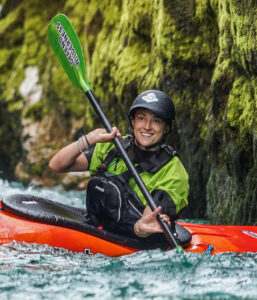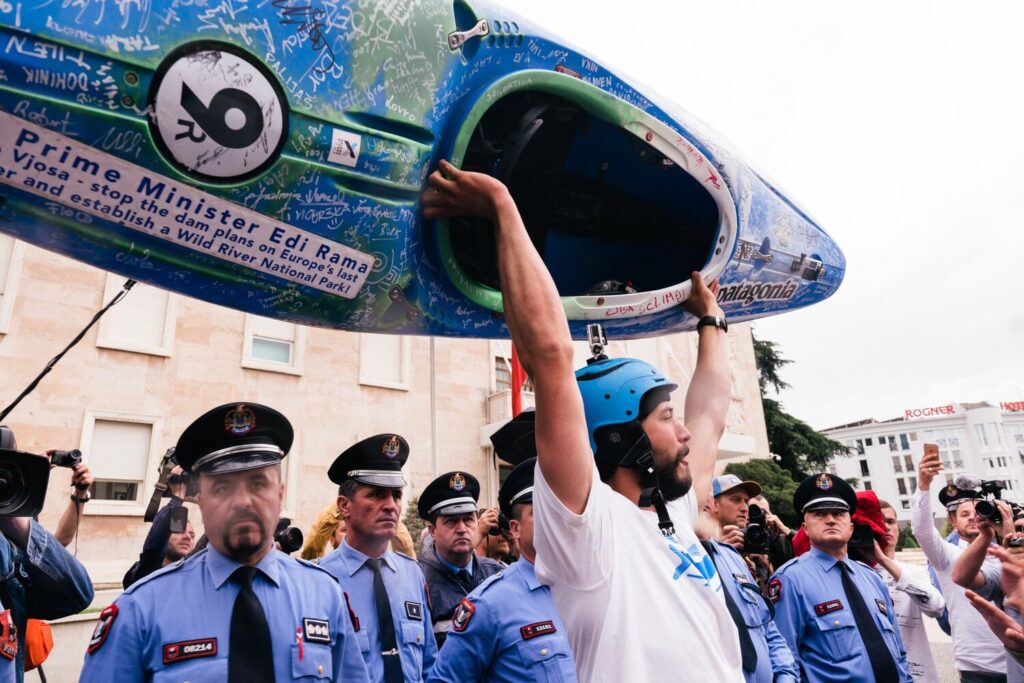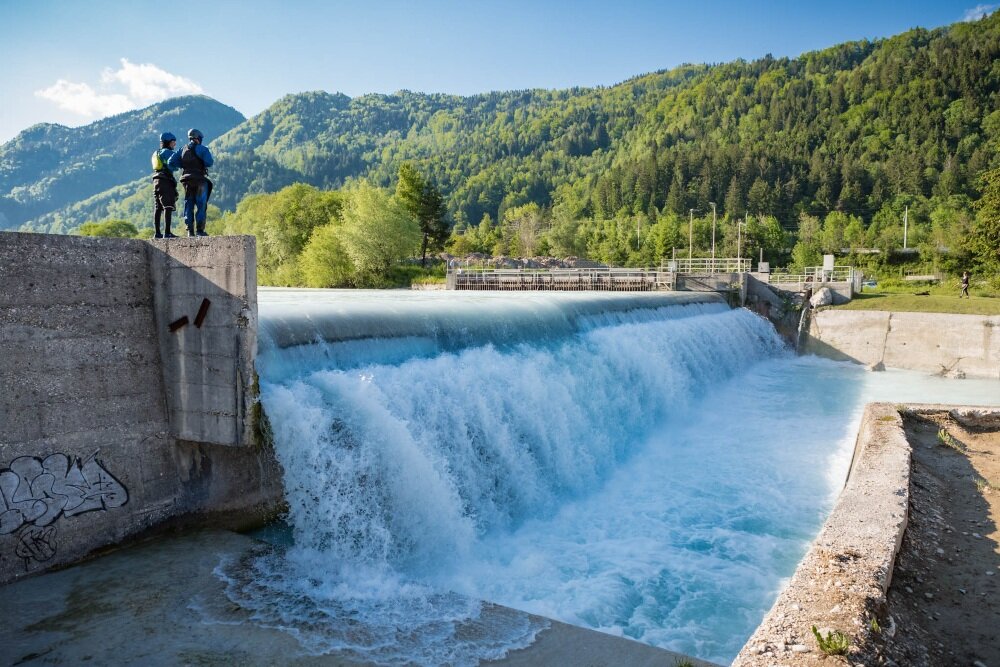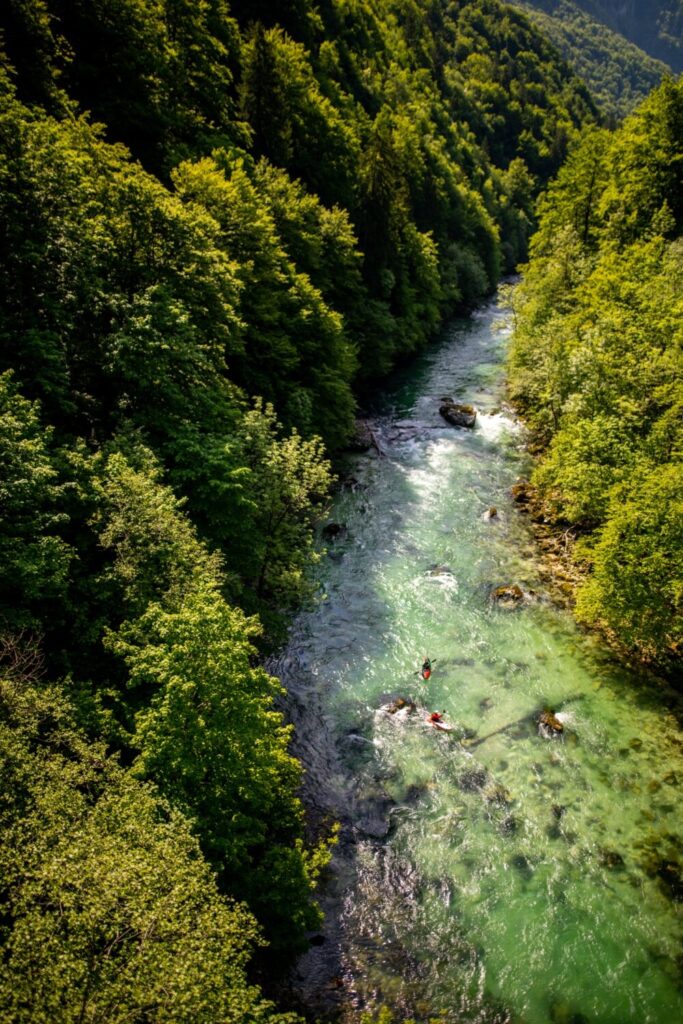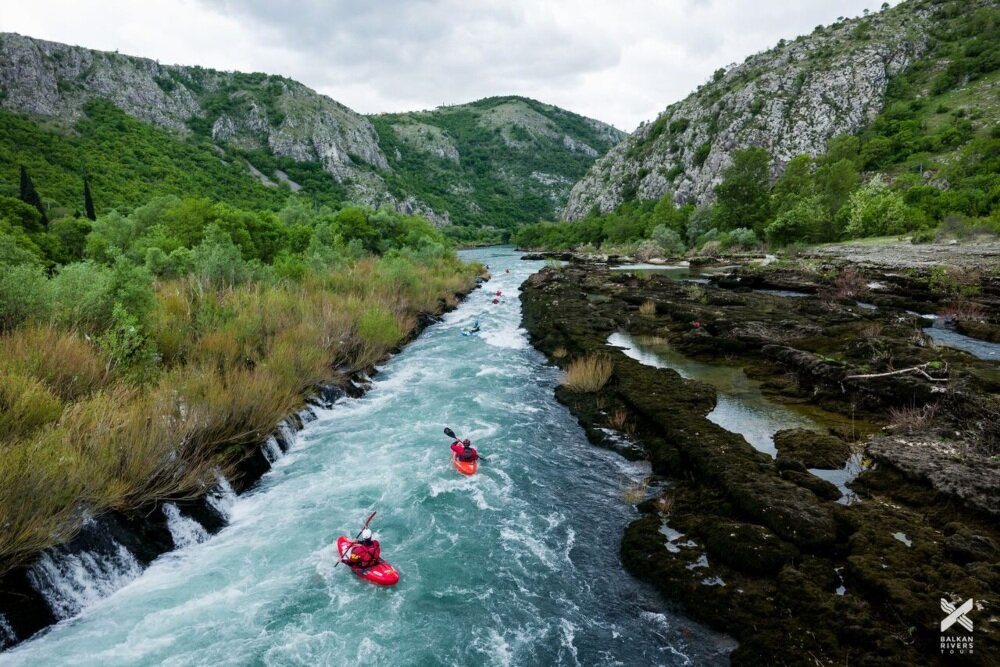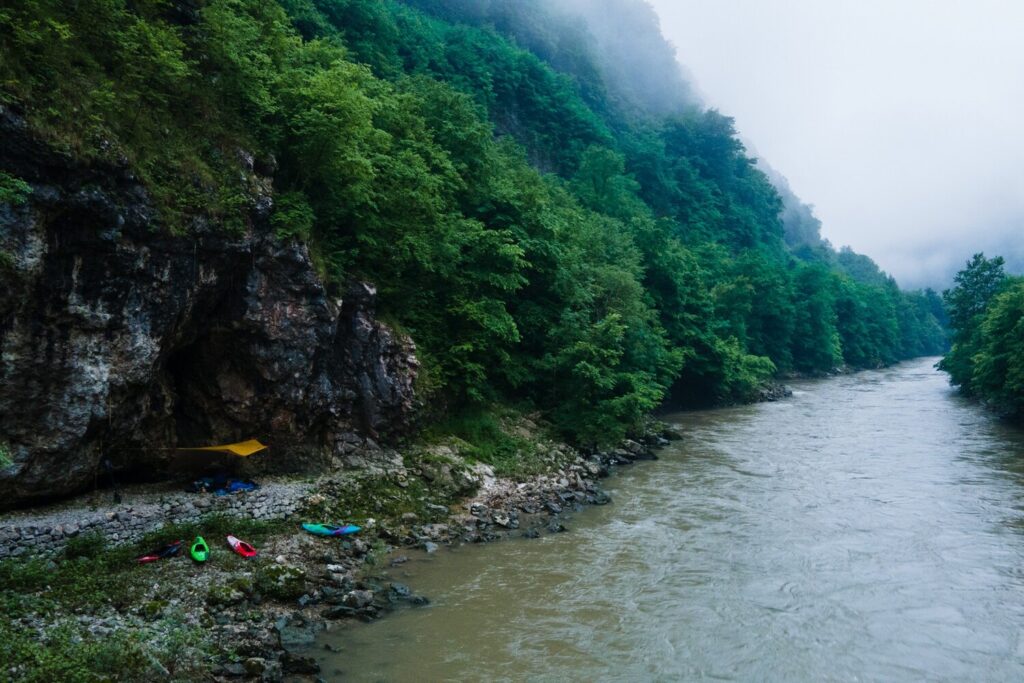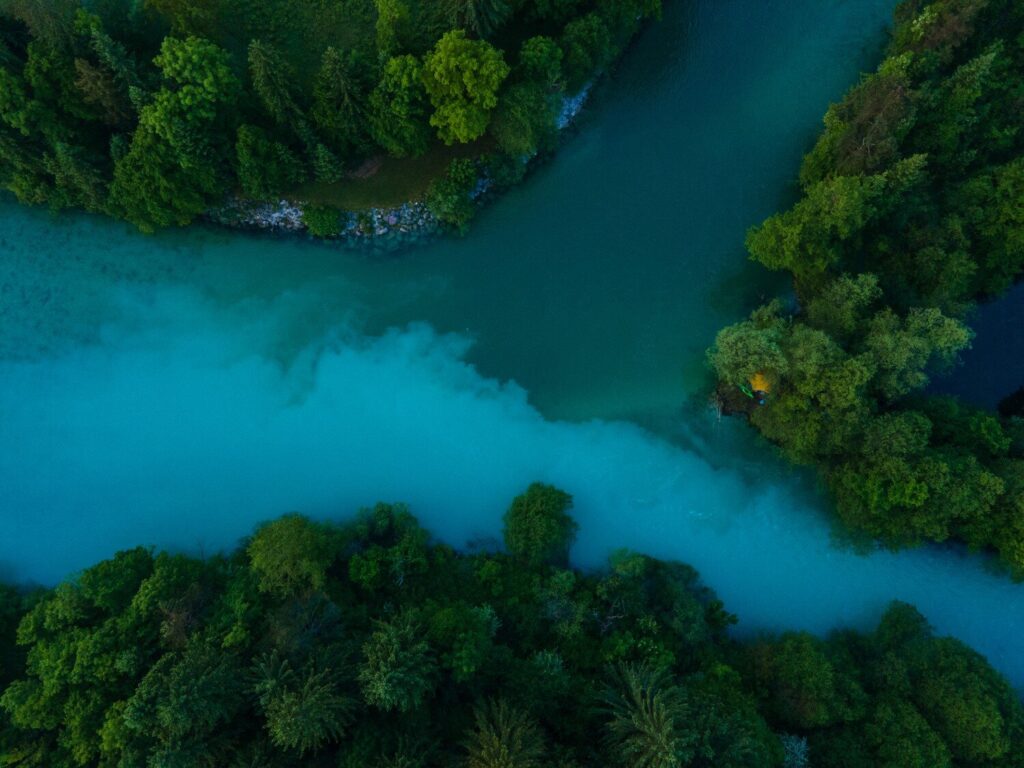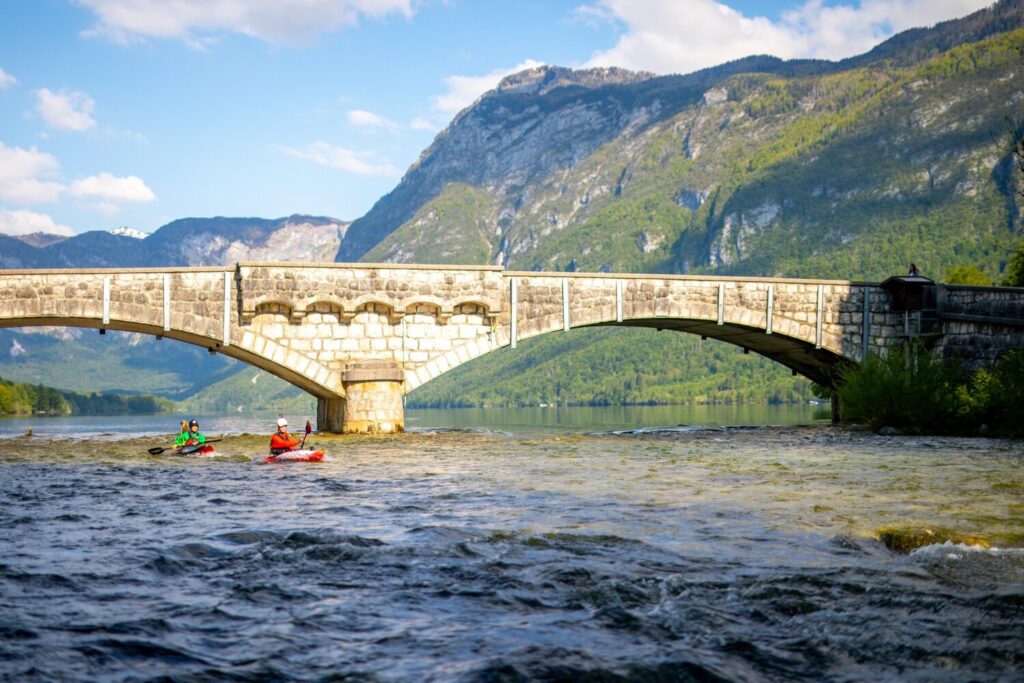As whitewater kayakers, we are privileged to experience wild pockets of the world that become accessible with a boat, paddle and whitewater skills. But with the luxury of access, comes a responsibility, as we are often the first people to discover threats like dams, pollution or resource extraction. Balkan River Defence (BRD) is a kayaker-founded river conservation NGO, dedicated to defending the last wild rivers in Europe’s Balkan Peninsula. Founded on the simple premise that people who paddle the wild rivers of the world have a unique opportunity and responsibility to protect them. A small crew of whitewater kayakers are changing the way environmentalism is approached, proving that river conservation doesn’t have to take place in offices, it can take place on rivers too.
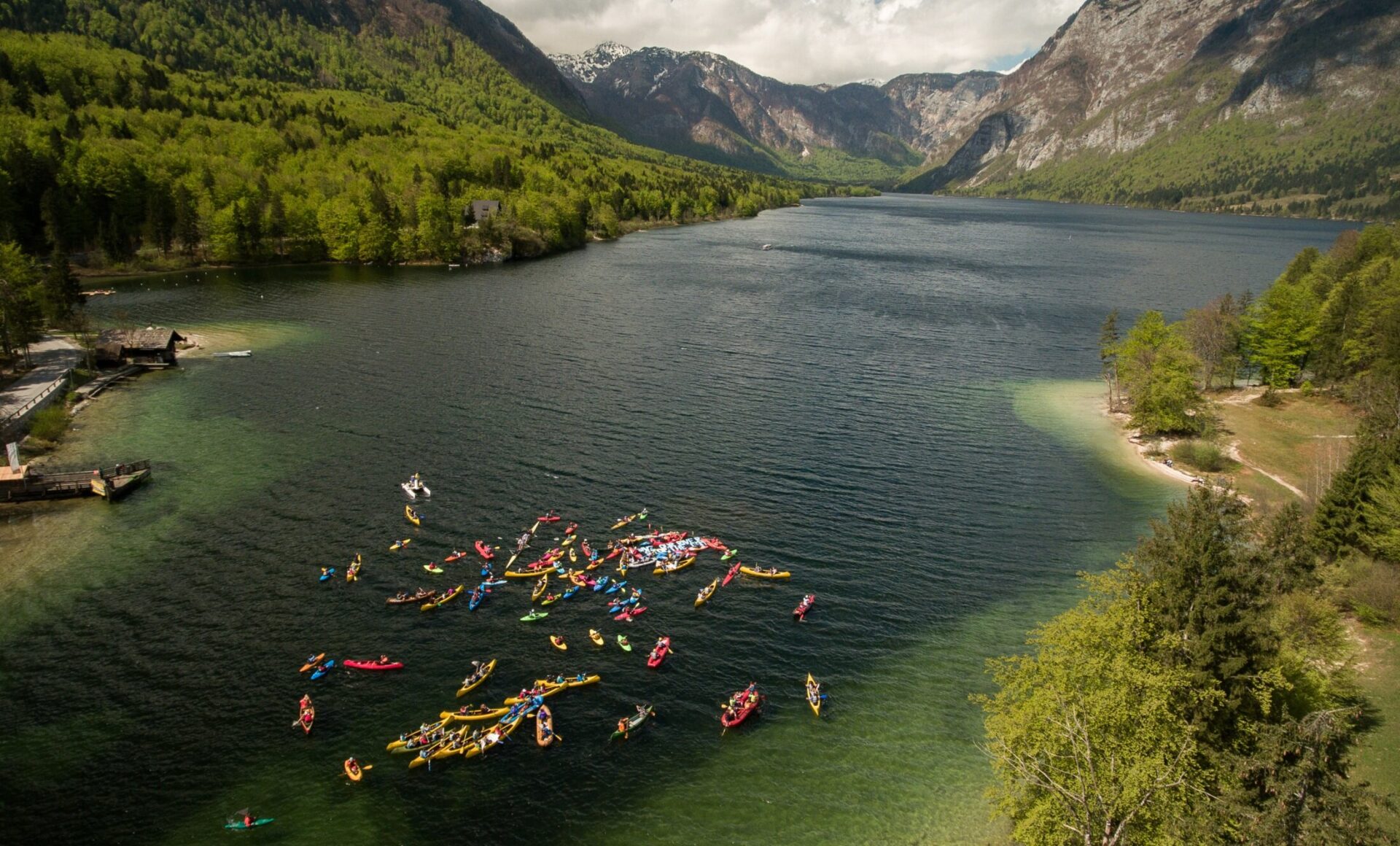
© Matic Oblak
Bold Action
Seeking a way to take-action in defence of the rivers of his backyard, professional kayaker, ex-Olympic rower, and biologist, Rok Rozman turned a simple, crazy idea into the biggest river conservation movement in Europe. He had enough of sitting at conferences, listening to complaints about the funding, organisation, and bureaucracy needed to stop 2,700 proposed dams being built on the last free-flowing rivers of Europe in the Balkan Peninsula. He wanted to do something simple and effective that would give people a chance to stand up and get involved directly. So, in the spring of 2016, he took his kayak, his friends, (some cameras and beers too) and toured the Balkans paddling as many of the threatened rivers as possible. He called this action, Balkan Rivers Tour (BRT).
Over the course of one month, they paddled 23 rivers in six countries; Slovenia, Croatia, Bosnia and Herzegovina, Montenegro, Macedonia, and Albania. BRT created an atmosphere where a fisherman and a farmer, a scientist and a kayaker, could join together to work towards solutions to the threats their rivers face, creating a wave of momentum that flowed into the Save the Blue Heart of Europe campaign. BRT also caused a huge surge in international media coverage, helping to spread the word about the wild rivers that still exist in Europe, the dangers they face from hydro development, and the locals fighting to protect them. From Germany to the US, Canada to Albania, word was getting out. The last wild rivers of Europe are in danger and paddlers are helping to protect them.
Grassroots River Conservation – Balkan River Defence
Balkan Rivers Tour turned into an annual paddling action, and the river conservation movement evolved into Balkan River Defence (BRD) – a registered NGO in Slovenia which has become a leader in environmental conservation nationally. It is a version of grassroots activism where science and river conservation blend with kayaking and adventure sports.
Balkan River Defence’s Mission is to DEFEND the remaining free flowing rivers of Europe, EXPOSE hydropower as unsustainable energy, PROVIDE alternatives through science, education, creativity and adventure sports and SUPPORT a network of local river activists.
From Canada to Slovenia
How did I get involved in BRD? I met Rok shortly after he finished the first BRT while I was working as an editor for a whitewater kayaking magazine. He wrote a story for the magazine, we kept in touch and he invited me to join the Balkan River Tour 2 team as the writer and…the rest is history. I moved to Slovenia four years ago and since then we have been running the NGO together with a small team of filmmakers, photographers and volunteers. We have created a formula that makes nature conservation inclusive, fun, and light. And effective. Together with a greater network of river conservation NGOs throughout the Balkans, we have helped stop seven dams so far, and have supported many small, locally-organised river defence movements.
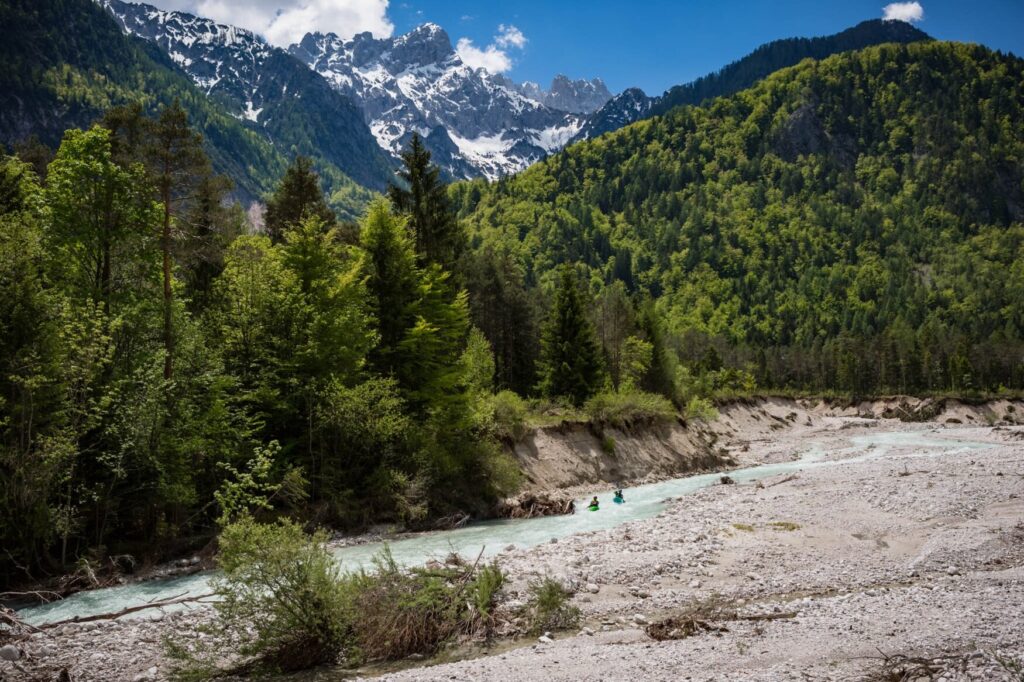
© Katja Pokorn
We have helped stop seven dams so far, and have supported many small, locally-organised river defence movements
The Undamaged Documentary
In 2019 we produced a documentary which tells the story of BRT1 and also the story of the rivers of the Balkans. The Undamaged takes viewers on the wild ride that was Balkan Rivers Tour 1 and presents the rivers and villages of the Balkans, from the seat of a whitewater kayak. The Undamaged was screened at mountain film festivals around the world including Kendal Mountain Festival, Vancouver International Mountain Film Festival and over 40 other festivals where it won 13 awards. The film was made to share the plight of the rivers of the Balkans, and support the locals working to protect their waterways, and it has been an effective tool for raising awareness and inspiring action, so we made it available to stream for free from our website.
Paddling Slovenia’s Sava River for BRT5
We have since completed BRT3 (2018), BRT4 (2020) and this year we were (finally, after a year’s delay) able to pull off BRT5. We had originally planned to kayak the entire Sava River, from its source in the Julian Alps of Slovenia, to where it drains into the mighty Danube River in Belgrade, Serbia. We set aside an entire month, invited all our friends, gathered gear and research equipment and made an interactive map of the 1000km river trip through Slovenia, Croatia, Bosnia and Herzegovina and Serbia. But when gatherings and international travel were banned, we had to get creative. So, we abandoned the standard Balkan Rivers Tour recipe of paddle, protest, press release, party, and came up with the idea to take a small crew – just four kayakers and a small media team – down the Slovenian stretch of the Sava, and make a documentary from our journey. This way we would achieve the original objectives of Balkan Rivers Tour 5 (BRT5) – showcase the Sava, and stop the 10 proposed dams – with different means.
We split the four kayakers into two crews, and each duo started paddling one of the two sources of the Sava River; the north fork, called the Sava Dolinka and the south fork, the Sava Bohinjka. The two groups met on day two at the confluence and continued together for the next nine days. Along the way, we worked together to complete the first continuous waterfowl survey of the Sava River during nesting season and also the first complete environmental DNA (eDNA) sampling of the Sava. And our media crew captured all the moments along the way.
Along the way, we stopped at predetermined locations on the river to collect eDNA samples with the goal of being able to provide another method of quantifying impacts man-made barriers have on the river. Using a drill machine to power a water pump, we pushed river water through special filters, that a crew of ichthyofauna specialists will later analyse in the lab for the presence of fish DNA (isolated from skin, scale, and feces particles caught in the filter), to get a picture about the fish diversity in the threatened and last free flowing section of the Sava.
For the water bird survey, we needed only our eyes and notebook. We divided the river into segments based on the type of river stretch (free-flowing, dammed, altered, etc.) and helped Bor count every water bird we saw, recording the data to a Slovenia ornithologist database.
In contrast of the upper Sava – where our gravel bar camp spots reminded me of a river back home in Canada – we had to portaged around more than a dozen dams throughout the trip. And with each one, our collective mood worsened. The contrast of knowing what the upstream, free-flowing sections of the Sava looked and felt like was particularly painful. This helped us realise our forced modifications to downsizing the tour turned out to be a benefit, allowing us to focus only on the Slovenian stretch of the Sava, which is the most threatened, with ten new dams planned. This was why the bird survey and water sampling were especially important; collecting data was actually more important than collecting film footage, as it would become our ammunition for the fight to keep these dams from being built, and the film would be the vessel to distribute this information.
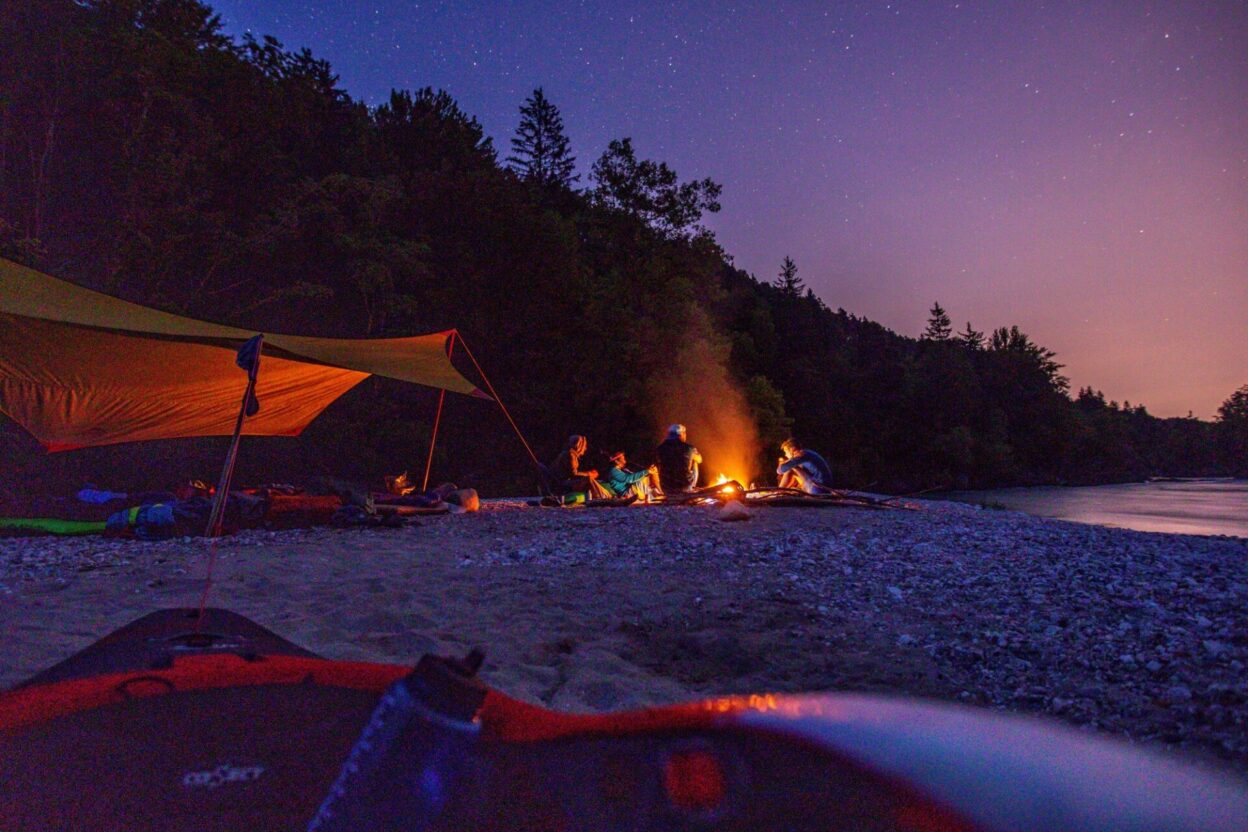
© Katja Jemec
After we struggled through flatwater and portages of the lower Sava, the flow came back, and with it our good mood. We were collectively amazed by how quickly the river regained life after the chain of hydroelectric dams. Dippers and kingfishers replaced the ducks and swans of the reservoirs and as we neared the Croatian border, we were even treated to another set of rapids, which would disappear if these new dams are built. With our blood pumping again, we were reminded of how resilient rivers are, and that if we keep our impact to a minimum, healthy humans and healthy rivers can coexist.
We were able to salvage BRT5, and it turned out to be an incredible tour where we were able to highlight the most threatened part of the Sava, and with the documentary, (which will be released in early 2022), we will be able to share this river with more people than could ever attend a BRT flotilla.
A whitewater kayak can be a powerful tool. It can take you deep into inaccessible canyons, remote stretches of wild whitewater and rivers of astounding beauty and power. From the seat of a kayak you can experience incredible landscapes and amazing river experiences. A kayak can take you to the places that fuel you. And as we have found, it can also be a tool to protect the rivers and water systems that nourish you and nourish our earth.
To learn more about BRD, find them on Facebook and Instagram, or check out the videos on Vimeo. Their film will be released in early 2022, stay tuned for the trailer here.
Don’t miss a single adventure
Sign up to our free newsletter and get a weekly BASE hit to your inbox
Other posts by this author
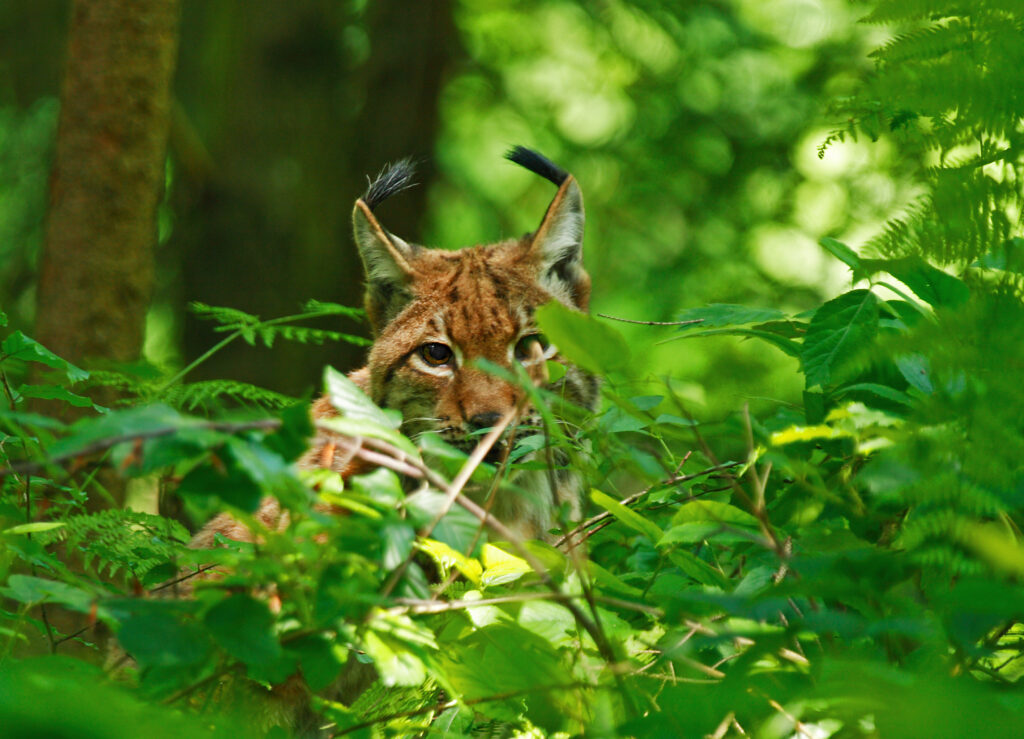
Story • Carmen Kuntz • Mar 24, 2023
The Missing Lynx: The Return Of Slovenia’s Big Cat
Hunters are the reason that lynx roam the forests of Slovenia again
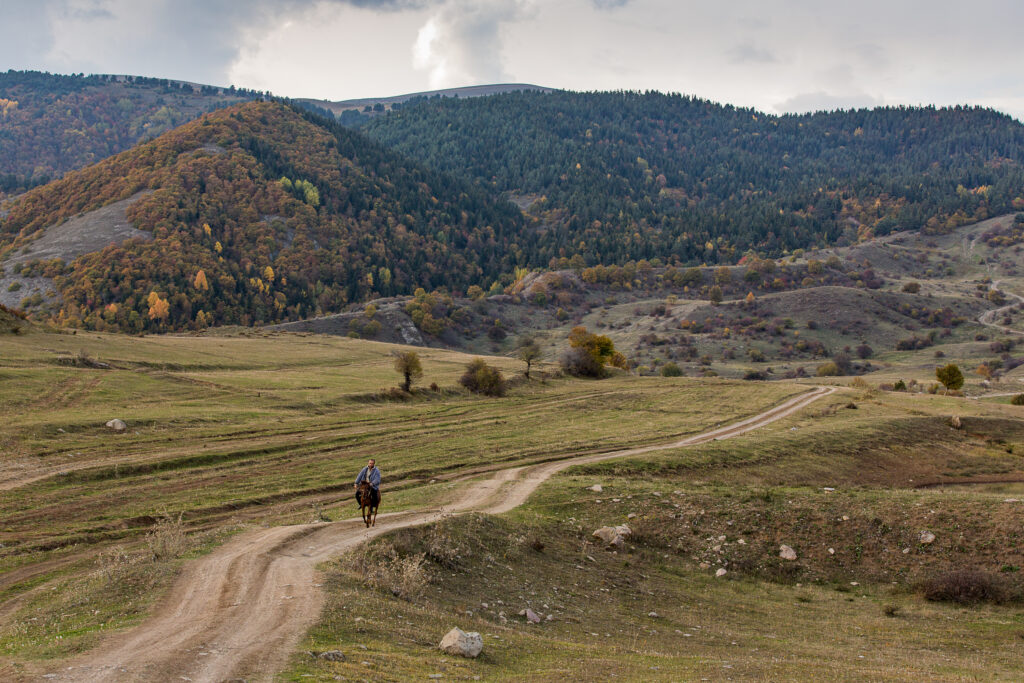
Story • Carmen Kuntz • Mar 06, 2023
How Innovative Nature Conservation Is Making a Big Difference in Armenia
The people behind the ECF project - protecting wildlife and supporting local communities in the South Caucasus
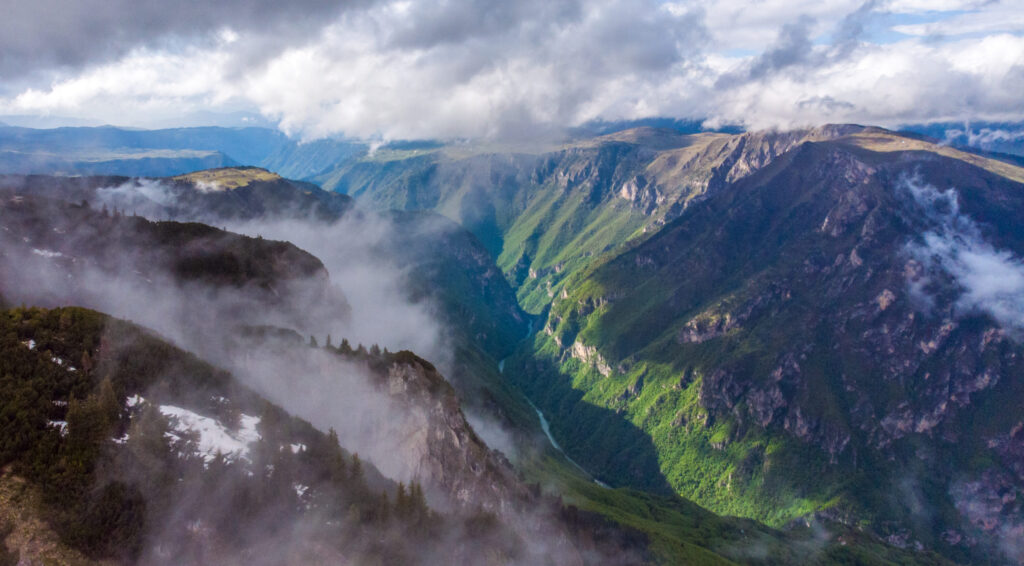
Story • Carmen Kuntz • Nov 30, 2022
Pioneers of Whitewater
The figures behind an adventure tourism movement in southeastern Europe
